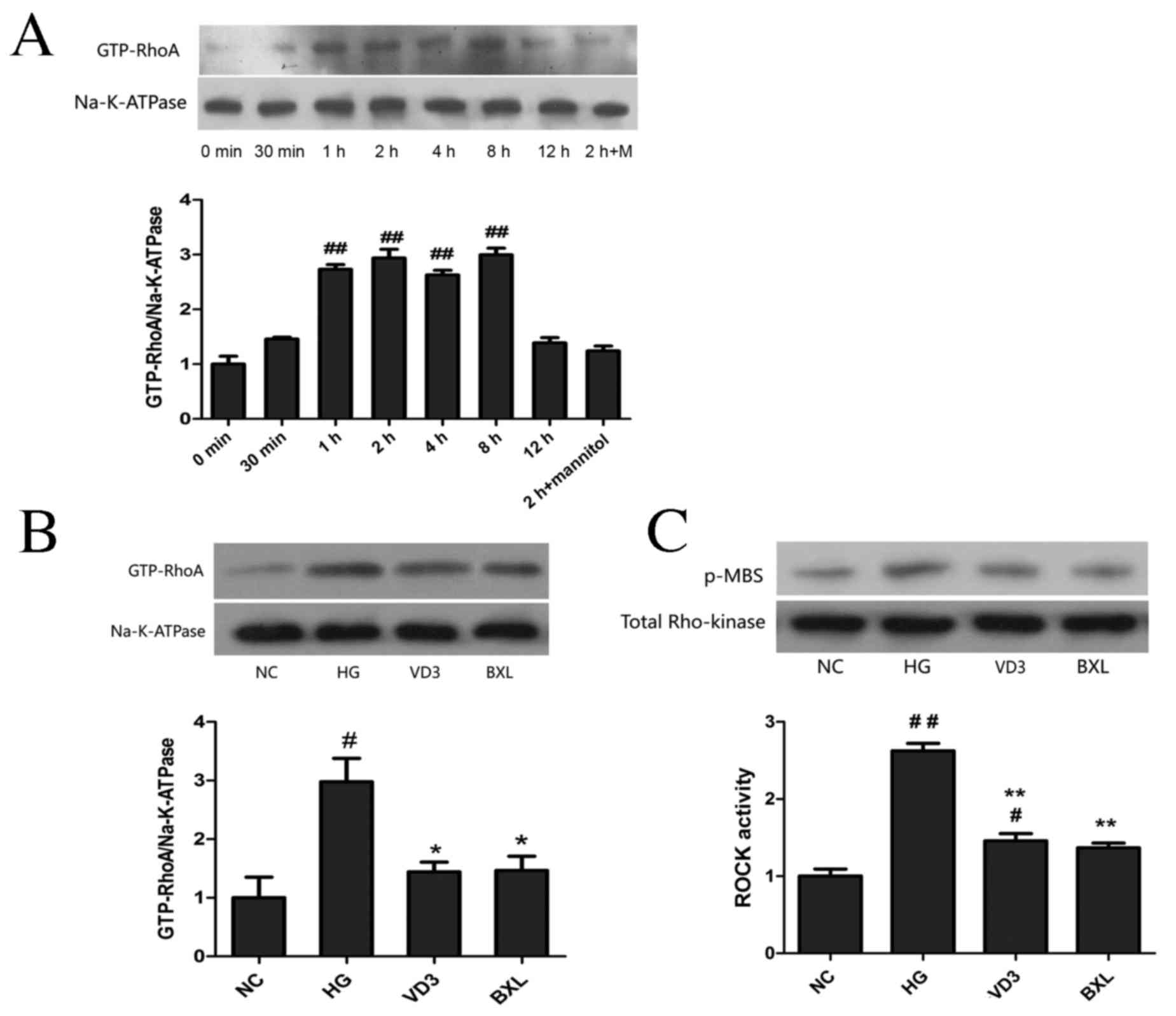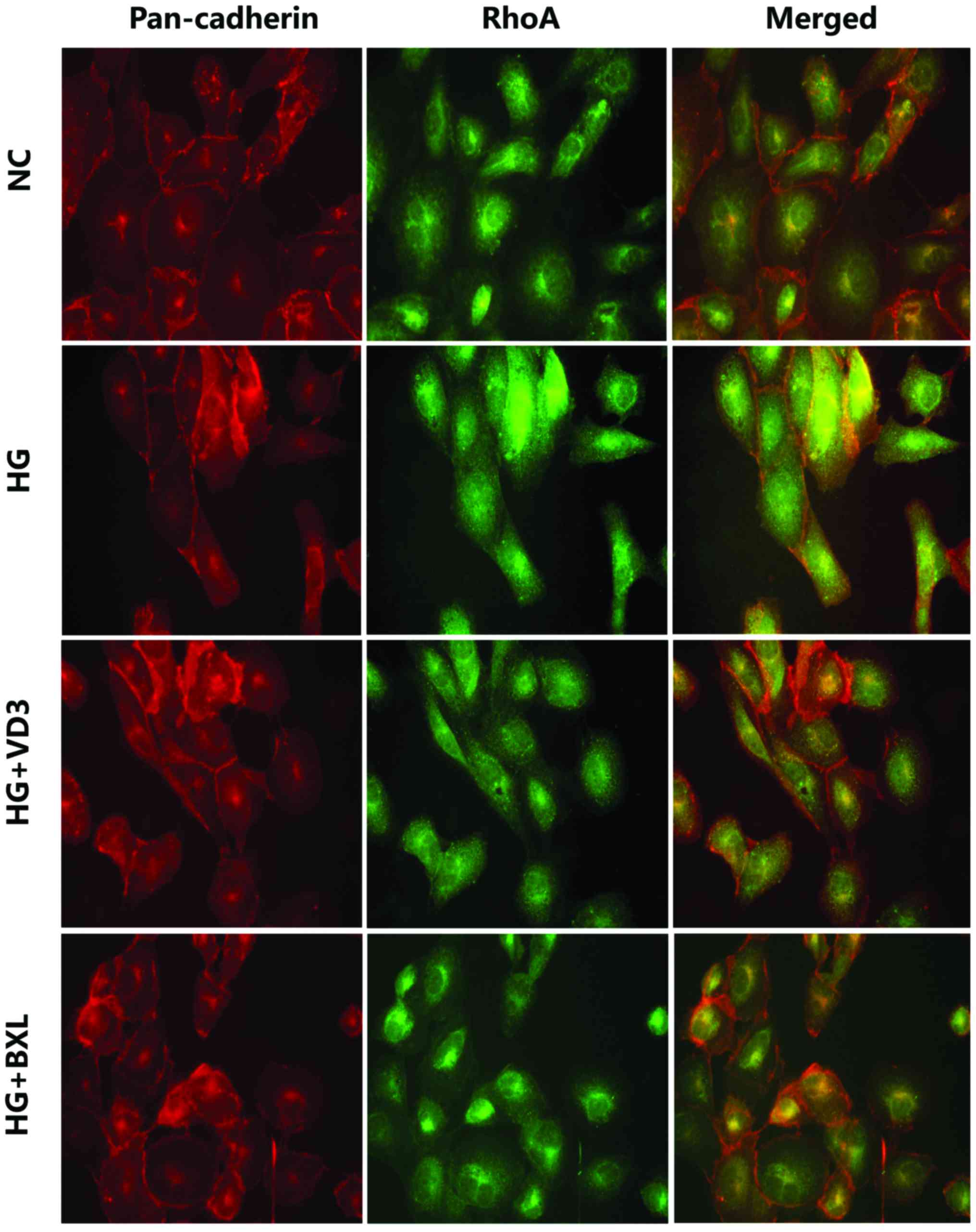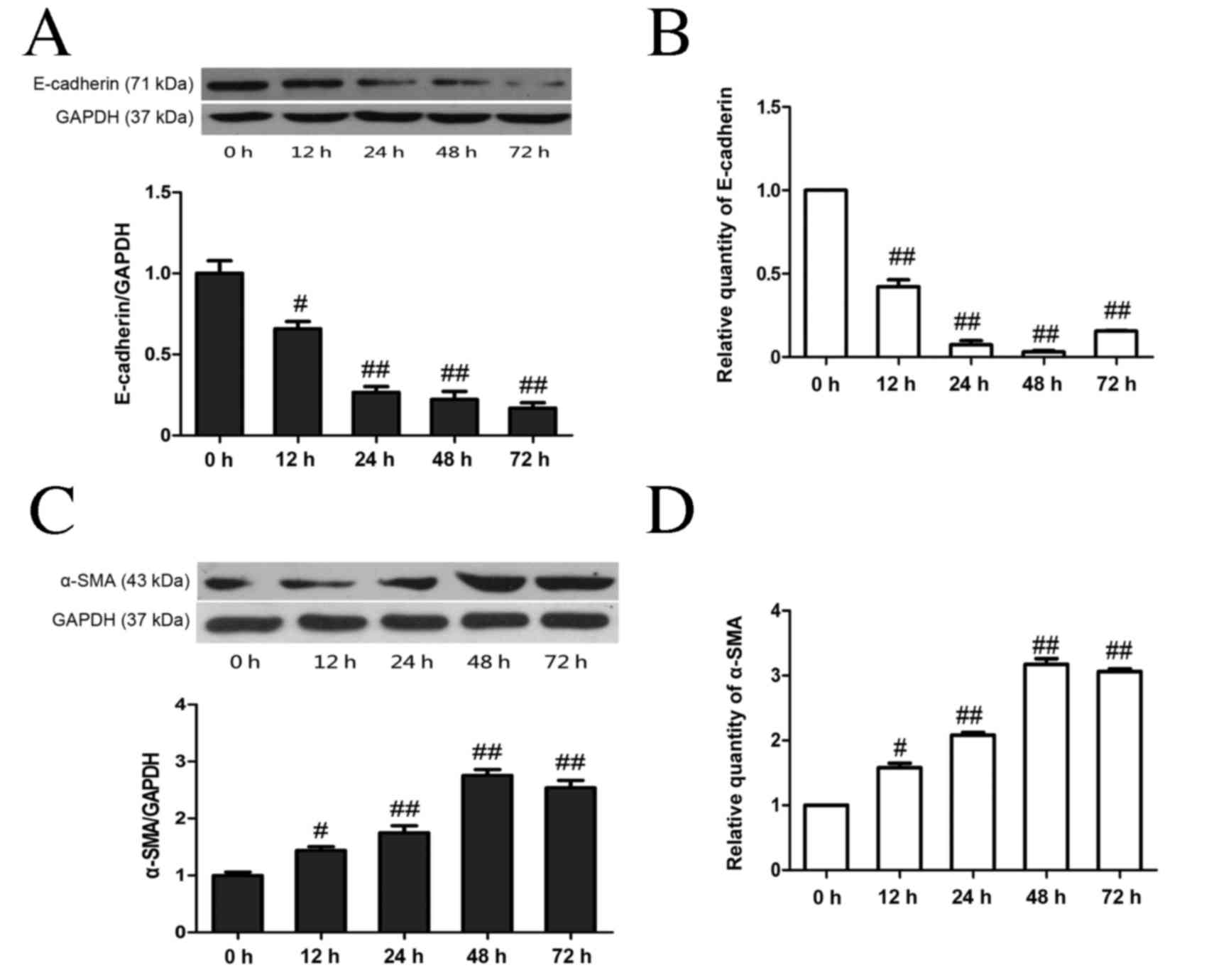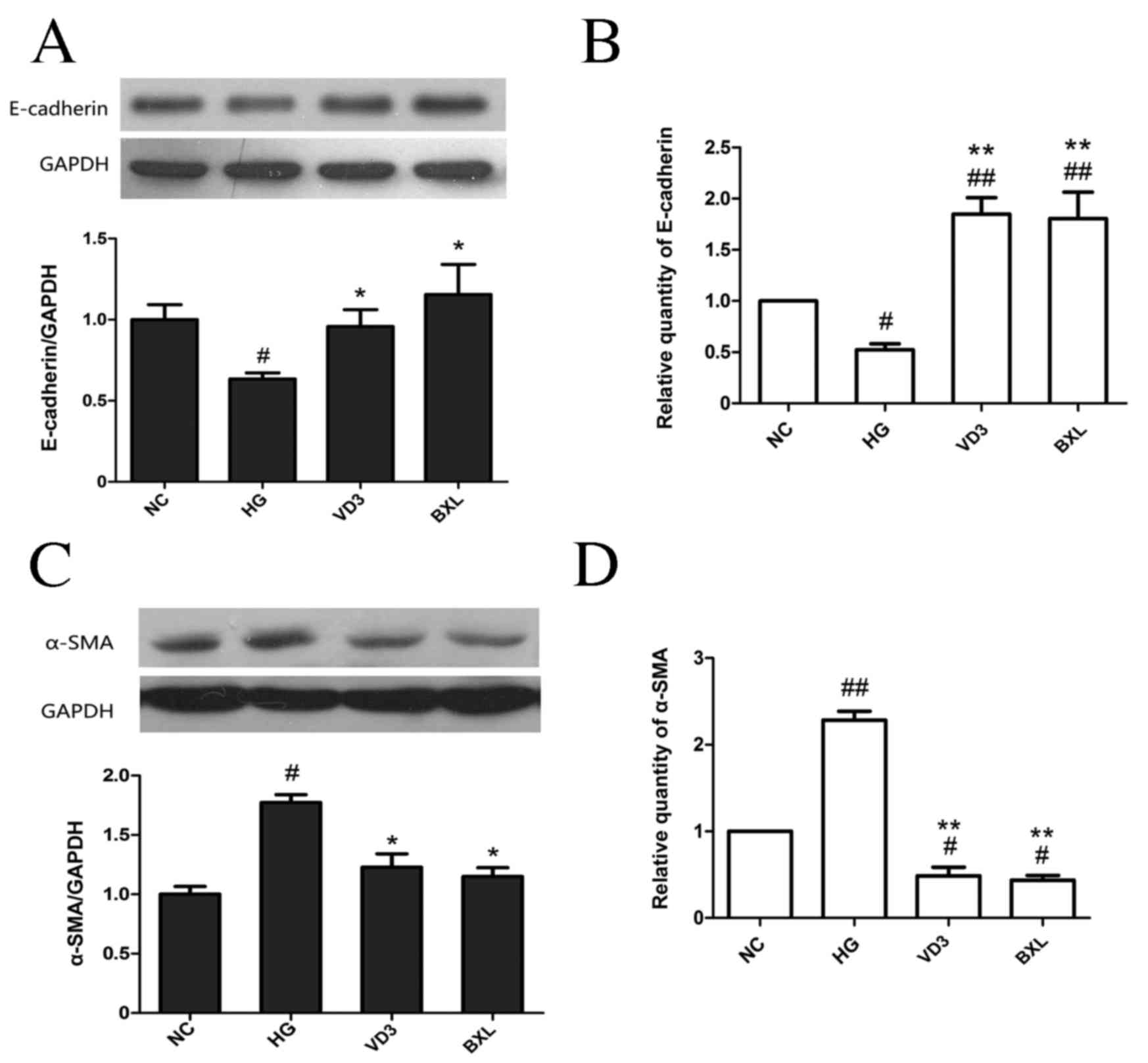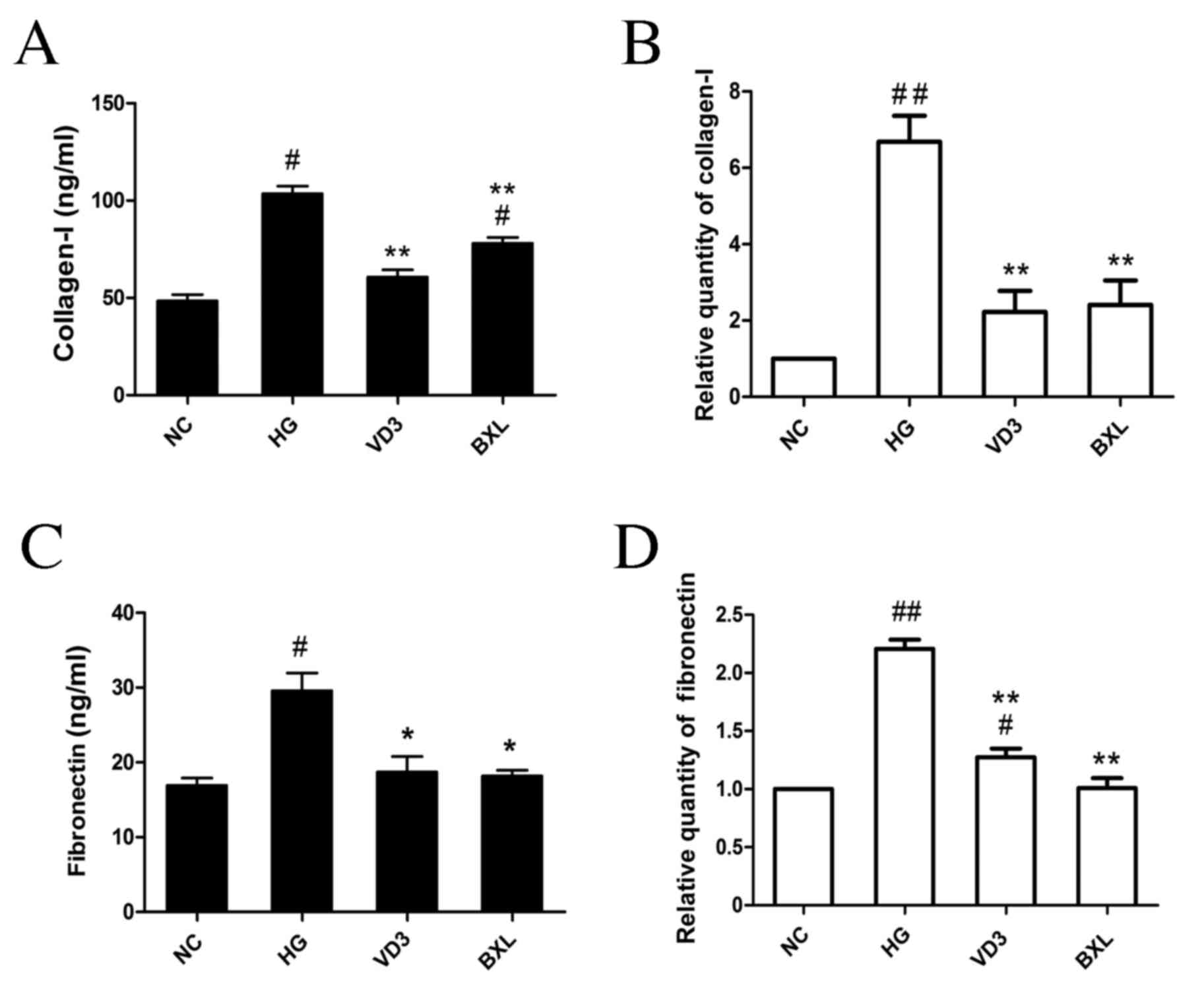|
1
|
Xu Y, Wang L, He J, Bi Y, Li M, Wang T,
Wang L, Jiang Y, Dai M, Lu J, et al: Prevalence and control of
diabetes in Chinese adults. JAMA. 310:948–959. 2013. View Article : Google Scholar : PubMed/NCBI
|
|
2
|
No authors listed: Retinopathy and
nephropathy in patients with type 1 diabetes four years after a
trial of intensive therapy. The diabetes control and complications
trial/epidemiology of diabetes interventions and complications
research group. N Engl J Med. 342:381–389. 2000. View Article : Google Scholar : PubMed/NCBI
|
|
3
|
Lewis EJ, Hunsicker LG, Bain RP and Rohde
RD: The effect of angiotensin-converting-enzyme inhibition on
diabetic nephropathy. The collaborative study group. N Engl J Med.
329:1456–1462. 1993. View Article : Google Scholar : PubMed/NCBI
|
|
4
|
Peng F, Wu D, Gao B, Ingram AJ, Zhang B,
Chorneyko K, McKenzie R and Krepinsky JC: RhoA/Rho-kinase
contribute to the pathogenesis of diabetic renal disease. Diabetes.
57:1683–1692. 2008. View Article : Google Scholar : PubMed/NCBI
|
|
5
|
Afkarian M, Sachs MC, Kestenbaum B, Hirsch
IB, Tuttle KR, Himmelfarb J and de Boer IH: Kidney disease and
increased mortality risk in type 2 diabetes. J Am Soc Nephrol.
24:302–308. 2013. View Article : Google Scholar : PubMed/NCBI
|
|
6
|
Xu Y, Wan J, Jiang D and Wu X: BMP-7
counteracts TGF-beta1-induced epithelial-to-mesenchymal transition
in human renal proximal tubular epithelial cells. J Nephrol.
22:403–410. 2009.PubMed/NCBI
|
|
7
|
Bhowmick NA, Ghiassi M, Bakin A, Aakre M,
Lundquist CA, Engel ME, Arteaga CL and Moses HL: Transforming
growth factor-beta1 mediates epithelial to mesenchymal
transdifferentiation through a RhoA-dependent mechanism. Mol Biol
Cell. 12:27–36. 2001. View Article : Google Scholar : PubMed/NCBI
|
|
8
|
Liu Y: Epithelial to mesenchymal
transition in renal fibrogenesis: Pathologic significance,
molecular mechanism, and therapeutic intervention. J Am Soc
Nephrol. 15:1–12. 2004. View Article : Google Scholar : PubMed/NCBI
|
|
9
|
Etienne-Manneville S and Hall A: Rho
GTPases in cell biology. Nature. 420:629–635. 2002. View Article : Google Scholar : PubMed/NCBI
|
|
10
|
Burridge K and Wennerberg K: Rho and Rac
take center stage. Cell. 116:167–179. 2004. View Article : Google Scholar : PubMed/NCBI
|
|
11
|
Kolavennu V, Zeng L, Peng H, Wang Y and
Danesh FR: Targeting of RhoA/ROCK signaling ameliorates progression
of diabetic nephropathy independent of glucose control. Diabetes.
57:714–723. 2008. View Article : Google Scholar : PubMed/NCBI
|
|
12
|
Manickam N, Patel M, Griendling KK, Gorin
Y and Barnes JL: RhoA/Rho kinase mediates TGF-β1-induced kidney
myofibroblast activation through Poldip2/Nox4-derived reactive
oxygen species. Am J Physiol Renal Physiol. 307:F159–F171. 2014.
View Article : Google Scholar : PubMed/NCBI
|
|
13
|
Zhang H, Liu X, Liu Y, Yi B and Yu X:
Epithelial-mesenchymal transition of rat peritoneal mesothelial
cells via Rhoa/Rock pathway. In Vitro Cell Dev Biol Anim.
47:165–172. 2011. View Article : Google Scholar : PubMed/NCBI
|
|
14
|
Zhang K, Zhang H, Xiang H, Liu J, Liu Y,
Zhang X, Wang J and Tang Y: TGF-β1 induces the dissolution of tight
junctions in human renal proximal tubular cells: Role of the
RhoA/ROCK signaling pathway. Int J Mol Med. 32:464–468.
2013.PubMed/NCBI
|
|
15
|
Al-Rubeaan K, Youssef AM, Subhani SN,
Ahmad NA, Al-Sharqawi AH, Al-Mutlaq HM, David SK and AlNaqeb D:
Diabetic nephropathy and its risk factors in a society with a type
2 diabetes epidemic: A Saudi national diabetes registry-based
study. PLoS One. 9:e889562014. View Article : Google Scholar : PubMed/NCBI
|
|
16
|
Guo J, Xia N, Yang L, Zhou S, Zhang Q,
Qiao Y and Liu Z: GSK-3β and vitamin D receptor are involved in
β-catenin and snail signaling in high glucose-induced
epithelial-mesenchymal transition of mouse podocytes. Cell Physiol
Biochem. 33:1087–1096. 2014. View Article : Google Scholar : PubMed/NCBI
|
|
17
|
Meems LM, Cannon MV, Mahmud H, Voors AA,
van Gilst WH, Silljé HH, Ruifrok WP and de Boer RA: The vitamin D
receptor activator paricalcitol prevents fibrosis and diastolic
dysfunction in a murine model of pressure overload. J Steroid
Biochem Mol Biol. 132:282–289. 2012. View Article : Google Scholar : PubMed/NCBI
|
|
18
|
de Zeeuw D, Agarwal R, Amdahl M, Audhya P,
Coyne D, Garimella T, Parving HH, Pritchett Y, Remuzzi G, Ritz E
and Andress D: Selective vitamin D receptor activation with
paricalcitol for reduction of albuminuria in patients with type 2
diabetes (VITAL study): A randomised controlled trial. Lancet.
376:1543–1551. 2010. View Article : Google Scholar : PubMed/NCBI
|
|
19
|
Tan X, Li Y and Liu Y: Paricalcitol
attenuates renal interstitial fibrosis in obstructive nephropathy.
J Am Soc Nephrol. 17:3382–3393. 2006. View Article : Google Scholar : PubMed/NCBI
|
|
20
|
Xiong M, Gong J, Liu Y, Xiang R and Tan X:
Loss of vitamin D receptor in chronic kidney disease: A potential
mechanism linking inflammation to epithelial-to-mesenchymal
transition. Am J Physiol Renal Physiol. 303:F1107–F1115. 2012.
View Article : Google Scholar : PubMed/NCBI
|
|
21
|
Sanchez-Niño MD, Bozic M, Córdoba-Lanús E,
Valcheva P, Gracia O, Ibarz M, Fernandez E, Navarro-Gonzalez JF,
Ortiz A and Valdivielso JM: Beyond proteinuria: VDR activation
reduces renal inflammation in experimental diabetic nephropathy. Am
J Physiol Renal Physiol. 302:F647–F657. 2012. View Article : Google Scholar : PubMed/NCBI
|
|
22
|
Duffy MM, McNicholas BA, Monaghan DA,
Hanley SA, McMahon JM, Pindjakova J, Alagesan S, Fearnhead HO and
Griffin MD: Mesenchymal stem cells and a vitamin D receptor agonist
additively suppress T helper 17 cells and the related inflammatory
response in the kidney. Am J Physiol Renal Physiol.
307:F1412–F1426. 2014. View Article : Google Scholar : PubMed/NCBI
|
|
23
|
Ding N, Yu RT, Subramaniam N, Sherman MH,
Wilson C, Rao R, Leblanc M, Coulter S, He M, Scott C, et al: A
vitamin D receptor/SMAD genomic circuit gates hepatic fibrotic
response. Cell. 153:601–613. 2013. View Article : Google Scholar : PubMed/NCBI
|
|
24
|
Morelli A, Vignozzi L, Filippi S, Vannelli
GB, Ambrosini S, Mancina R, Crescioli C, Donati S, Fibbi B, Colli
E, et al: BXL-628, a vitamin D receptor agonist effective in benign
prostatic hyperplasia treatment, prevents RhoA activation and
inhibits RhoA/Rho kinase signaling in rat and human bladder.
Prostate. 67:234–247. 2007. View Article : Google Scholar : PubMed/NCBI
|
|
25
|
Manchanda PK, Kibler AJ, Zhang M, Ravi J
and Bid HK: Vitamin D receptor as a therapeutic target for benign
prostatic hyperplasia. Indian J Urol. 28:377–381. 2012. View Article : Google Scholar : PubMed/NCBI
|
|
26
|
Livak KJ and Schmittgen TD: Analysis of
relative gene expression data using real-time quantitative PCR and
the 2(−Delta Delta C(T)) Method. Methods. 25:402–408. 2001.
View Article : Google Scholar : PubMed/NCBI
|
|
27
|
Tang SC, Leung JC and Lai KN: Diabetic
tubulopathy: An emerging entity. Contrib Nephrol. 170:124–134.
2011. View Article : Google Scholar : PubMed/NCBI
|
|
28
|
Kanlaya R, Sintiprungrat K and
Thongboonkerd V: Secreted products of macrophages exposed to
calcium oxalate crystals induce epithelial mesenchymal transition
of renal tubular cells via RhoA-dependent TGF-β1 pathway. Cell
Biochem Biophys. 67:1207–1215. 2013. View Article : Google Scholar : PubMed/NCBI
|
|
29
|
Mezzano S, Droguett A, Burgos ME, Ardiles
LG, Flores CA, Aros CA, Caorsi I, Vío CP, Ruiz-Ortega M and Egido
J: Renin-angiotensin system activation and interstitial
inflammation in human diabetic nephropathy. Kidney Int Suppl.
S64–S70. 2003. View Article : Google Scholar : PubMed/NCBI
|
|
30
|
Kim CS, Joo SY, Lee KE, Choi JS, Bae EH,
Ma SK, Kim SH, Lee J and Kim SW: Paricalcitol attenuates
4-hydroxy-2-hexenal-induced inflammation and epithelial-mesenchymal
transition in human renal proximal tubular epithelial cells. PLoS
One. 8:e631862013. View Article : Google Scholar : PubMed/NCBI
|
|
31
|
Gonçalves JG, de Bragança AC, Canale D,
Shimizu MH, Sanches TR, Moysés RM, Andrade L, Seguro AC and Volpini
RA: Vitamin D deficiency aggravates chronic kidney disease
progression after ischemic acute kidney injury. PLoS One.
9:e1072282014. View Article : Google Scholar : PubMed/NCBI
|
|
32
|
Ordonez-Mórán P, Larriba MJ, Pálmer HG,
Valero RA, Barbáchano A, Duñach M, de Herreros AG, Villalobos C,
Berciano MT, Lafarga M and Muñoz A: RhoA-ROCK and p38MAPK-MSK1
mediate vitamin D effects on gene expression, phenotype, and Wnt
pathway in colon cancer cells. J Cell Biol. 183:697–710. 2008.
View Article : Google Scholar : PubMed/NCBI
|
|
33
|
Pertz O, Hodgson L, Klemke RL and Hahn KM:
Spatiotemporal dynamics of RhoA activity in migrating cells.
Nature. 440:1069–1072. 2006. View Article : Google Scholar : PubMed/NCBI
|
|
34
|
Wildenberg GA, Dohn MR, Carnahan RH, Davis
MA, Lobdell NA, Settleman J and Reynolds AB: p120-catenin and
p190RhoGAP regulate cell-cell adhesion by coordinating antagonism
between Rac and Rho. Cell. 127:1027–1039. 2006. View Article : Google Scholar : PubMed/NCBI
|
|
35
|
Amuchastegui S, Daniel KC and Adorini L:
Inhibition of acute and chronic allograft rejection in mouse models
by BXL-628, a nonhypercalcemic vitamin D receptor agonist.
Transplantation. 80:81–87. 2005. View Article : Google Scholar : PubMed/NCBI
|















